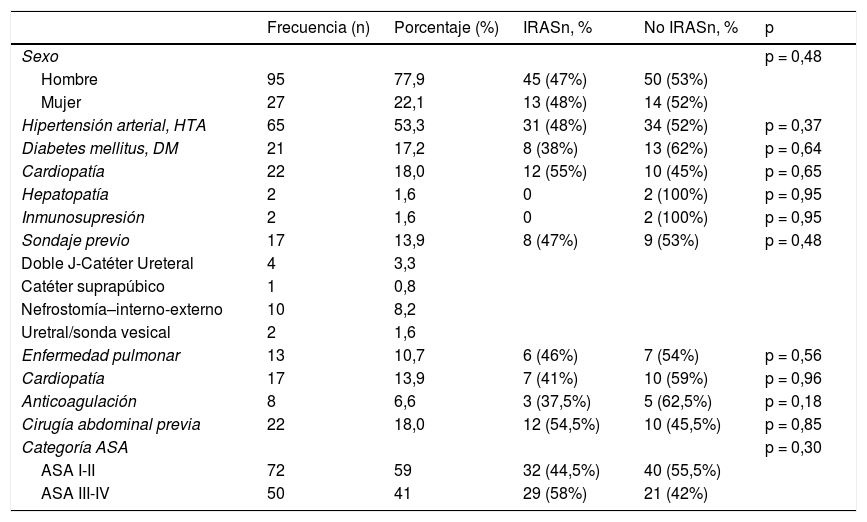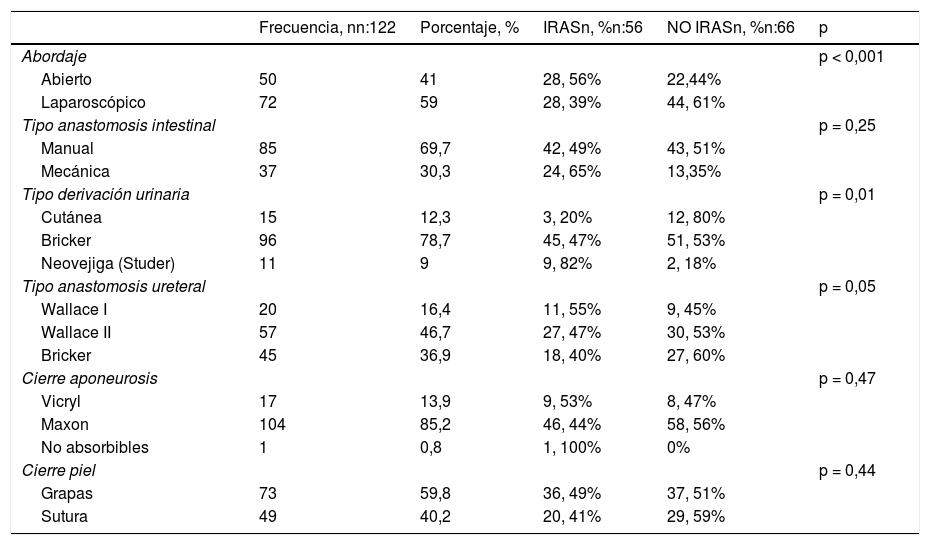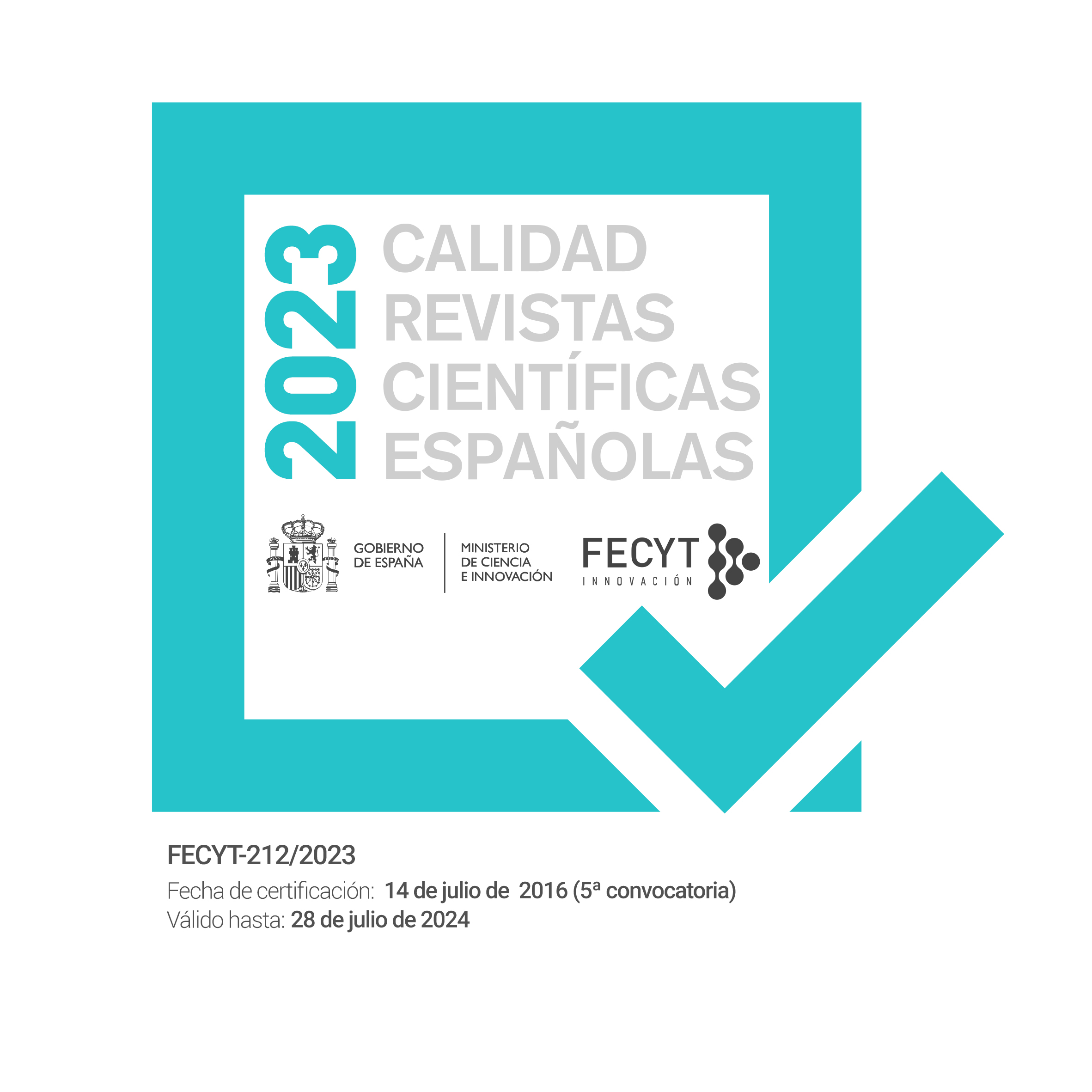La cistectomía radical es una cirugía compleja con una alta tasa de complicaciones, entre ellas las infecciones, conllevando un aumento de la morbimortalidad, estancia hospitalaria y costes. El objetivo de este trabajo es estudiar las infecciones relacionadas con la asistencia sanitaria (IRAS) en estos pacientes, así como de los microorganismos asociados, perfiles de resistencia antibiótica y factores de riesgo.
Material y métodosEstudio prospectivo del 2012 al 2017. Se recogen variables epidemiológicas, comorbilidades y variables quirúrgicas. Se analizan los microorganismos implicados y patrones de susceptibilidad antibiótica.
ResultadosEstudio de 122 pacientes. Edad media 67 años (DE:18,42). Estancia hospitalaria media 23,5 días (18,42). Tasa de IRAS del 45%, predominando las infecciones del tracto urinario (43%) y de la herida quirúrgica (31%). Cultivos positivos en el 78,6% de los casos. Mayor aislamiento de Enterococcus (18%) y Escherichia coli (13%). El 43% de los microorganismos presentaban resistencia a la amoxicilina/ampicilina, 23% a las betalactamasas y 36% a las quinolonas. El tratamiento empírico fue adecuado en el 87,5%. Se observa un aumento en la estancia hospitalaria (17 días, p < 0,05) por padecer una IRAS. Menor tasa de complicaciones infecciosas en el abordaje laparoscópico frente al abierto (p< 0,001) y en las derivaciones ortotópicas frente al conducto ileal (p = 0,04).
ConclusionesEncontramos una elevada tasa de IRAS en nuestra serie de cistectomías radicales, con un predominio de infecciones del tracto urinario y de la herida quirúrgica. E. coli y Enterococcus spp. son los microorganismos más frecuentemente aislados, con altas tasas de resistencia a algunos antibióticos de uso común.
Radical cystectomy is a complex surgery with a high rate of complications including infections, which lead to increased morbidity and mortality, longer hospital stay and higher costs. The aim of this work is to evaluate health care-associated infections (HAIs) in these patients, as well as associated microorganisms, antibiotic resistance profiles and risk factors.
Material and methodsProspective study from 2012 to 2017. Epidemiologic variables, comorbidities and surgical variables are collected. The microorganisms involved and antibiotic susceptibility patterns are analyzed.
Results122 patients. Mean age 67 (SD:18,42). Mean hospital stay 23.5 days (18.42). HAIs rate of 45%, with predominant urinary tract infections (43%) and surgical wound infections (31%). Positive cultures in 78.6% of cases. Increased isolation of Enterococcus (18%) and Escherichia coli (13%). Forty-three percent of microorganisms were resistant to amoxicillin/ampicillin, 23% to beta-lactamases and 36% to quinolones. Empirical treatment was adequate in 87.5%. Hospital stay is increased (17 days, p< 0.05) due to HAIs. Lower rate of infectious complications in the laparoscopic vs. open approach (p< 0.001) and in orthotopic vs. ileal conduit diversion (p = 0.04)
ConclusionsWe found a high rate of HAIs in our radical cystectomy series, with predominant urinary tract and surgical wound infections. E.coli and Enterococcus spp. are the most frequently isolated microorganisms, with high rates of resistance to some commonly used antibiotics.















